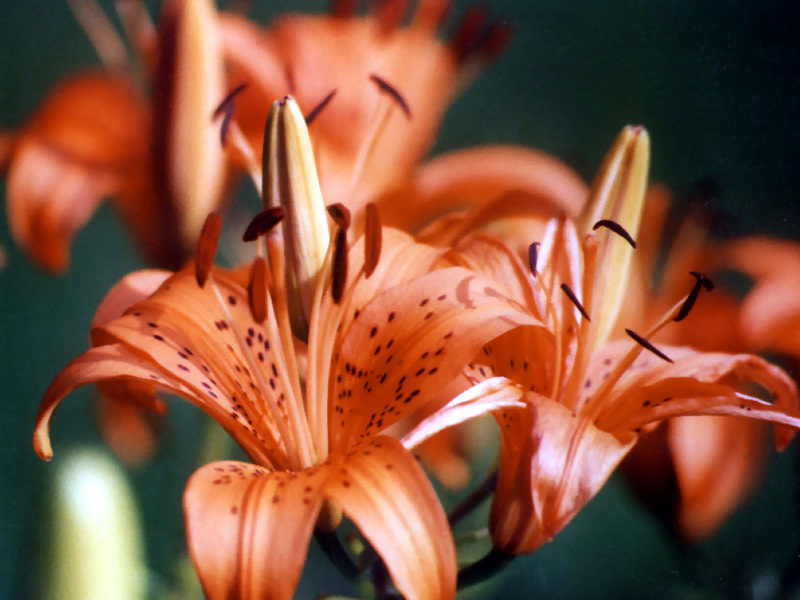Unleash creativity with a garden designed for young minds
Posted on 01/10/2025
Unleash Creativity with a Garden Designed for Young Minds
Gardens have always been magical spaces--verdant places where imagination blossoms and curiosity takes root. But when a garden is designed for young minds, its potential to spark wonder and creative play multiplies tenfold. This comprehensive guide explores how a thoughtfully created children's garden can become a vibrant stage for creative growth, hands-on learning, and joyful exploration.
Why a Creative Garden Matters for Young Learners
Childhood is a time of discovery. The environments children inhabit deeply influence how they grow, learn, and connect with the world. A garden designed for young minds nurtures not only their bodies but also their hearts and imaginations. Here's why these gardens are so important:
- Multi-sensory Stimulation: Gardens engage all the senses--sight, smell, touch, taste, and hearing--in ways that classrooms often cannot.
- Encouragement of Exploration: Natural environments are fertile ground for curiosity and experimentation.
- Imagination Expansion: A creative kids' garden provides a blank canvas for stories, make-believe games, and artistic pursuits.
- Hands-on Learning: Gardening teaches responsibility, problem-solving, and scientific observation.
- Connection to Nature: Early exposure fosters respect, stewardship, and a lifelong love of the environment.
Gardens made for young learners are more than just smaller versions of adult landscapes. They are thoughtfully curated spaces where children can express themselves, build confidence, and unleash their innate creativity.

Designing a Garden for Young Minds: Where Creativity Grows
How can you create a garden that unlocks creativity for children? Focus on elements that inspire play, learning, and self-expression. Here are some essential components to include:
1. Imaginative Zones and Themes
Give your garden a narrative--perhaps a fairy garden, dinosaur den, bug explorer's paradise, or edible adventure plot. These themes set the stage for storytelling and creative play. Consider:
- Secret Paths: Winding trails lined with stepping stones invite exploration.
- Hidden Nooks: Tuck away leafy hideouts or bean teepees for secret meetings and daydreams.
- Themed Play Structures: Integrate whimsical elements like pirate ships, castles, or butterfly benches to spark creative play.
2. Edible Wonderlands
Plant fruit and vegetable patches that children can help sow, tend, and harvest. Snackable cherry tomatoes, strawberries, snap peas, and edible flowers engage the senses and encourage healthy eating. Growing food teaches patience, responsibility, and gives kids ownership of their environment.
3. Sensory Gardens
A sensory garden is designed to delight touch, taste, smell, sight, and hearing. Include:
- Textured plants: Lamb's ears, ornamental grasses, and succulents invite gentle handling.
- Fragrant flowers: Lavender, mint, basil, and jasmine fill the air with enchanting scents.
- Sound elements: Wind chimes, rustling bamboo, and trickling water features create a calming, focused ambiance.
- Colorful displays: Rainbow rows of blooms and painted pots intrigue the eye.
4. Creative Building Corners
Dedicate a space for outdoor art and construction. Stock it with natural materials--sticks, rocks, leaves, pinecones--as well as kid-friendly tools. Children can build bug hotels, twig forts, fairy houses, or sculptures, encouraging creative problem-solving and teamwork.
5. Wildlife-Friendly Features
Encourage children to observe and care for wildlife. Bird feeders, butterfly gardens, bug hotels, and frog ponds introduce young gardeners to ecosystem dynamics and nurture empathy for all living things. Offer magnifying glasses and guidebooks to boost curiosity.
Unleashing Creativity Through Outdoor Play
When a garden is designed for young minds, play and learning happen naturally. Here are ways your creative kids' garden can cultivate different forms of creativity:
- Free Play and Discovery: Open-ended exploration, digging, and inventing games foster imagination.
- Art and Expression: Drawing with chalk on stepping stones, painting rocks, or assembling leaf collages bring art outside.
- STEM Learning: Gardening involves measurements, weather observation, and life cycles--science comes to life naturally in the garden.
- Social Skills: Working together to plant, build, and care for the garden teaches cooperation and communication.
- Storytelling: Nature is the perfect backdrop for making up stories and acting them out among the flowers and trees.
A garden that unlocks creativity for children encourages them to think differently, solve problems, and express themselves in unique ways. These are skills that will benefit them for a lifetime.
Practical Tips for Designing a Kids' Creative Garden
Ready to transform your outdoor space? Follow these tips to design a garden that inspires young minds:
1. Involve the Kids
Let children help pick plants, decide on themes, and build features. Their sense of ownership fuels pride and interest, and their ideas can surprise you!
2. Make Safety a Priority
- Choose non-toxic plants.
- Ensure paths are even and not slippery.
- Supervise tool use and be cautious with water features.
3. Plan for All Seasons
Select a mix of evergreens, bulbs, annuals, and perennials for year-round interest. Include cozy spots for cold weather and shady retreats in summer.
4. Use Child-Friendly Tools and Materials
Choose sturdy, lightweight tools and planters that little hands can manage. Raised beds at child height make planting and harvesting accessible and fun.
5. Build in Flexibility
Gardens change as children grow. Leave space to evolve--what begins as a dinosaur zone may transform into an art nook or science lab as interests shift.
Inspiring Kids' Garden Ideas to Ignite Creativity
Looking for inspiration? Here are some creative garden ideas children love:
- Storybook Gardens: Plant based on favorite books--think The Secret Garden or Peter Rabbit.
- Miniature Fairy or Hobbit Villages: Use rocks, moss, and tiny furniture for magical worlds.
- Pollinator Pathways: Fill flower beds with butterfly- or bee-attracting blooms and teach about pollinator lifecycles.
- Music Corners: Hang recycled instruments and wind chimes for outdoor concerts.
- Living Tunnels and Teepees: Grow beans, gourds, or sunflowers over archways for secret hideaways.
- Water Play Areas: Shallow basins, hand-pump wells, and rain chains are safe and engaging alternatives to ponds.
Every creative feature you add builds a richer and more stimulating landscape--one where every visit offers something new to discover.
Benefits Beyond Creativity: How Garden Design Shapes Young Minds
A garden designed for kids' creativity also delivers a wealth of other developmental benefits:
- Physical Growth: Digging, lifting, and running in the garden develop strong bodies and fine motor skills.
- Emotional Wellbeing: Nature reduces anxiety and fosters peacefulness.
- Self-Confidence: Nurturing plants and seeing results instills pride and resilience.
- Environmental Awareness: A sense of responsibility and stewardship blooms along with the flowers.
In a digital age, time spent outside is more important than ever. Giving children the gift of a creative garden is giving them space to grow not just plants, but also a spirit of creativity and curiosity.

How to Make Your Garden Sustainable and Educational
An eco-friendly, educational garden multiplies its positive effects. Here's how to balance fun and sustainability:
- Composting Stations: Teach about recycling organic waste.
- Rain Barrels & Water Conservation: Demonstrate eco-friendly water use.
- Native Plantings: Support local ecosystems and reduce maintenance needs.
- Recycled Materials: Use old tires for planters, repurpose household items for garden art.
- Scientific Journaling: Encourage kids to record plant growth, weather, and garden wildlife.
Conclusion: Unleashing Possibility in Every Leaf
A garden for young minds is more than a beautified backyard or a playground. It's an ever-evolving creativity lab tailored for imagination, learning, and discovery. From colorful sensory spaces to imaginative themed zones, a garden can unlock dreams and hobbies that will last a lifetime.
Unleash creativity with a garden designed for young minds and watch your children (or students) cultivate not just plants, but also the seeds of curiosity, innovation, and admiration for the natural world. With a little planning, every home or school can transform an outdoor corner into a sanctuary where creativity blooms--one child, one flower, one magical memory at a time.

